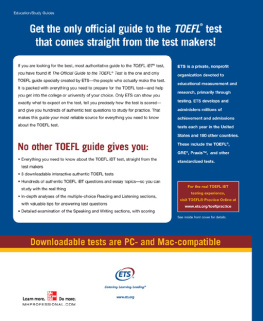
THE
OFFICIAL
ACT
MATHEMATICS GUIDE
ACT
Copyright 2020 by ACT, Inc. All rights reserved.
Published by John Wiley & Sons, Inc., Hoboken, New Jersey.
Published simultaneously in Canada.
No part of this publication may be reproduced, stored in a retrieval system, or transmitted in any form or by any means, electronic, mechanical, photocopying, recording, scanning, or otherwise, except as permitted under Section 107 or 108 of the 1976 United States Copyright Act, without either the prior written permission of the Publisher, or authorization through payment of the appropriate per-copy fee to the Copyright Clearance Center, Inc., 222 Rosewood Drive, Danvers, MA 01923, (978) 750-8400, fax (978) 646-8600, or on the Web at www.copyright.com. Requests to the Publisher for permission should be addressed to the Permissions Department, John Wiley & Sons, Inc., 111 River Street, Hoboken, NJ 07030, (201) 748-6011, fax (201) 748-6008, or online at http://www.wiley.com/go/permissions.
Trademarks: Wiley and the Wiley logo are trademarks or registered trademarks of John Wiley & Sons, Inc. in the United States and other countries. All other trademarks are the property of their respective owners.
Limit of Liability/Disclaimer of Warranty: While the publisher and author have used their best efforts in preparing this book, they make no representations or warranties with respect to the accuracy or completeness of the contents of this book and specifically disclaim any implied warranties of merchantability or fitness for a particular purpose. No warranty may be created or extended by sales representatives or written sales materials. The advice and strategies contained herein may not be suitable for your situation. You should consult with a professional where appropriate. Neither the publisher nor author shall be liable for any loss of profit or any other commercial damages, including but not limited to special, incidental, consequential, or other damages.
For general information on our other products and services or for technical support, please contact our Customer Care Department within the United States at (800) 762-2974, outside the United States at (317) 572-3993 or fax (317) 572-4002.
Wiley publishes in a variety of print and electronic formats and by print-on-demand. Some material included with standard print versions of this book may not be included in e-books or in print-on-demand. If this book refers to media such as a CD or DVD that is not included in the version you purchased, you may download this material at http://booksupport.wiley.com. For more information about Wiley products, visit www.wiley.com.
ACT endorses the Code of Fair Testing Practices in Education and the Code of Professional Responsibilities in Educational Measurement, guides to the conduct of those involved in educational testing. ACT is committed to ensuring that each of its testing programs upholds the guidelines in each Code. A copy of each Code may be obtained free of charge from ACT Customer Services. (70), P.O. Box 1008, Iowa City, IA 522431008, 3193371429.
No part of this publication may be reproduced or transmitted in any form or by any means, electronic or mechanical, including photocopy, recording, or any information storage or retrieval system, without permission in writing from ACT, Inc. Inquiries concerning this publication should be mailed to:
ACT Publications
P.O. Box 168
Iowa City, Iowa 522430168
ISBN 978-1-119-63437-9 (paper)
ISBN 978-1-119-63472-0 (ePub)
Cover design: Wiley
Introduction
So you want to do well on the ACT mathematics test. That's a good goal to have! Whether you've already taken the test once or are planning to do so in the near or even distant future, this book will help you achieve your goal. There are three major factors that will determine how well you do on the ACT math test:
You need to be focused and diligent in your studies and preparation for the ACT mathematics test. There is no getting around that. You need to put the time and effort into fully practicing the skills the test will be looking for. If you are reading this book, it can be assumed that you are focused on achieving your goal of success and that you are willing to put the necessary time and effort into making it happen.
The third factor, guidance, is where this book comes into play. Guidance is difficult to supply to yourself. This book covers just about every math topic that you're likely to see on the ACT mathemtics test, so by going through this book, you'll know what to expect on test day.
The ACT math test can be daunting because of the sheer number of math topics. Fortunately, the test is based on topics covered in high school, so nothing here is new. Even in high school math, the ACT mathematics test only asks questions about certain topics, and only these topics are in this book. There are topics that you may see on the test, such as exponents, and topics that you won't see, such as Venn diagrams. If you see an unfamiliar topic in this book, you'll probably see that topic again, in class, before the year is over.
The plan is simple. Start with for a detailed and thorough breakdown of the solution to each question.
If you struggle with certain math topics, you're not alone, but now you have an edge: you know the scope of the ACT math test and which topics you need to review. Most students who score well on the ACT had to practice first, and this is something that you can do. Almost no one gets a perfect score, but with the guidance in this book, you can score well enough to be a competitive applicant to a good university.
You definitely want to pick up the other ACT subject guides, and you'll eventually want to take at least one full-length practice exam from The Official ACT Prep Guide, but this is a good start for the math. You can and will succeed with your goal of doing well on the ACT math test. You provide the focus and the effort, and this book will provide the guidance. So read on, and let's get started.
Chapter 1:
The ACT Math Test
The ACT mathematics test is a 60-question, 60-minute test designed to assess the mathematical reasoning skills that you've acquired in courses taken up to the beginning of grade 12. Most questions are self-contained, but some may belong to a set of several questions (e.g., about the same graph or chart).
The questions cover a wide variety of concepts, techniques, and procedures that emphasize the major content areas requisite to successful performance in entry-level courses in college mathematics. Some questions require computation, but the questions are designed to emphasize your ability to reason mathematically, not your ability to compute numbers or recall complex formulas.
You may use a calculator. See www.act.org/calculator-policy.html for details about models and features that are permitted or prohibited.
Reporting Categories: Score Reporting
Nine scores are reported for the mathematics test: a total test score based on all 60 questions and eight reporting category scores based on specific mathematical knowledge and skills. The approximate number of questions and percentage of the test devoted to each reporting category is shown in .
Number of Questions per Reporting Category
| Reporting Category/Reported Score | Number of Questions | Percentage of Test |
Next page
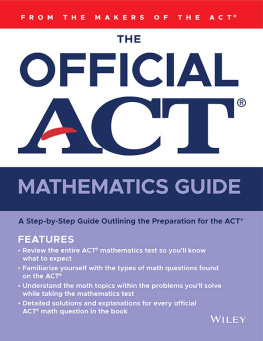
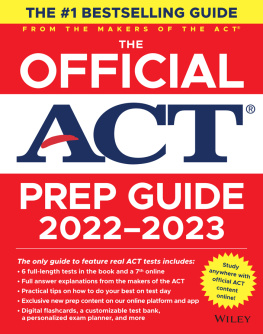
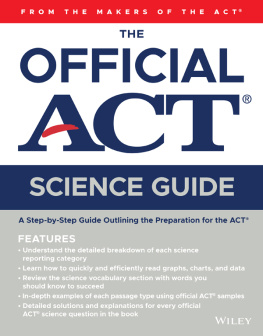

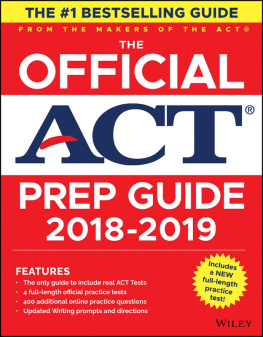
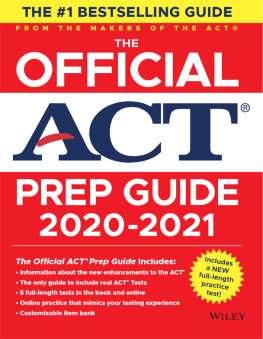
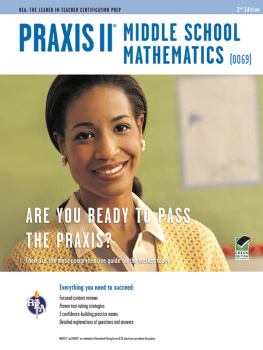


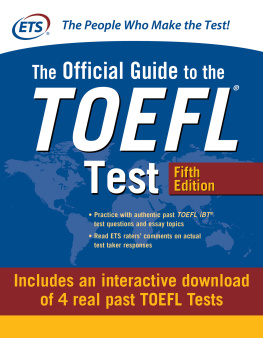
![ACT - The official ACT prep guide, [2018]: [the only official Prep Guide from the Makers of the ACT]](/uploads/posts/book/164684/thumbs/act-the-official-act-prep-guide-2018-the.jpg)
